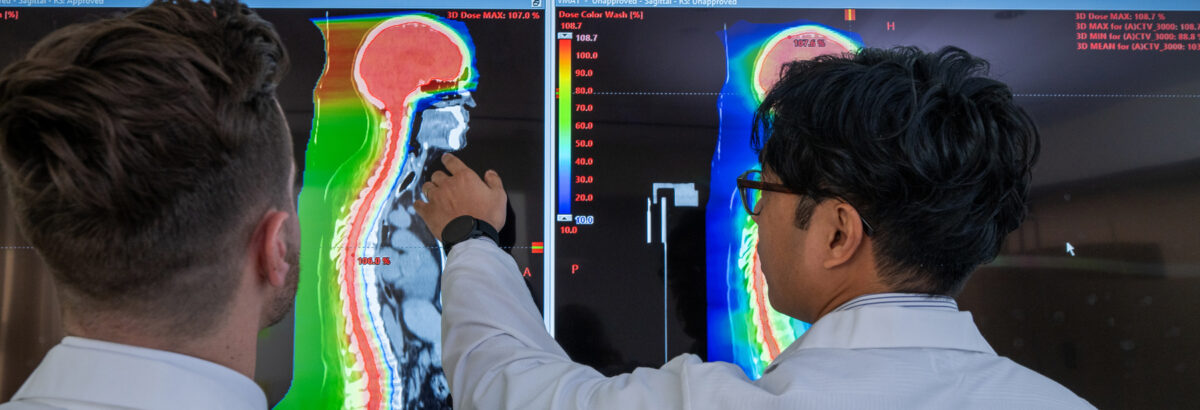The Physics Behind Your Cancer Treatment
What are the Advantages of Proton Therapy?
When you think of cancer care, very few people would say that physics comes to mind, but it may be one of the most vital aspects of treatment. Here at the New York Proton Center, we have a team of 11 medical physicists, four physicist assistants, three physics postdoctoral research fellows and one clinical programmer who play critical roles in ensuring that every patient receives the safest and highest quality proton radiation therapy.
Haibo Lin, PhD, DABR, Director of Medical Physics, explains, “Two of the primary advantages of proton therapy are the ability of protons to target the tumor more accurately and to better spare the healthy tissues around the tumor. Protons are a lot denser than the photons used in traditional radiation and have a particular physical property called the Bragg peak that makes it possible for the protons to deposit less energy on their way to the tumor and to give no unnecessary irradiation to the normal tissues beyond the tumor.” This radically decreases the risk of injury to surrounding healthy tissues and organs.
How Are Medical Physicists Involved in Your Treatment Plan?
The Medical Physics team ensures the optimal treatment plan, the quality of treatment, and the precision of the machinery, and they protect patients and staff from unnecessary radiation exposure. Their role in patient care begins when a new patient is approved for treatment and needs a simulation, a process guided by a CT scan to map out and customize the exact shape and intensity of the proton beam for treatment. The physicists work with the Dosimetry team to develop a patient-specific treatment plan based on the physician’s prescription and the appearance of the tumor on imaging. This plan is reviewed and approved by the patient’s radiation oncologist and physicist before treatment begins.
Proton therapy systems are complex and large. Because of their size, most of the equipment is hidden behind walls and patients in the treatment rooms never see it. The protons originate from an ion source where hydrogen atoms are separated into electrons and protons. From there, the separated protons are injected into an accelerating machine called a cyclotron where the particles are energized and then sent through another machine called an energy selection system that adjusts that energy so we can customize the proton beam to deliver the exact amount of radiation to the desired depth in the patient’s body. The Medical Physics team makes sure this complex machinery works as designed with sub-millimeter precision, and they are always on call for any unexpected challenge that may arise during treatment.
“Our beam transport system is one of the best in the country,” says Dr. Lin. “When a patient is in the treatment room, the machine rotates at 360 degrees so they can receive the proton beam at the best beam angles to treat their tumor.”
What Specialized Training is Needed to Become a Medical Physicist?
The rigorous preparation includes an undergraduate degree in physics or engineering plus an additional three to five years of graduate study through a program approved by the Commission on Accreditation of Medical Physics Education Programs (CAMPEP), followed by a CAMPEP-approved residency. A medical physicist then needs to go through three-step examinations to become a certified medical physicist by the American Board of Radiology (ABR).
Our work here at the New York Proton Center wouldn’t be possible if it weren’t for Dr. Lin and his team. Their unique skill set has helped save lives and made cancer treatment easier and safe for everybody involved. The team wants prospective patients to know that physicists are among the many people involved in ensuring that every patient receives high quality, safe, and customized proton therapy.



